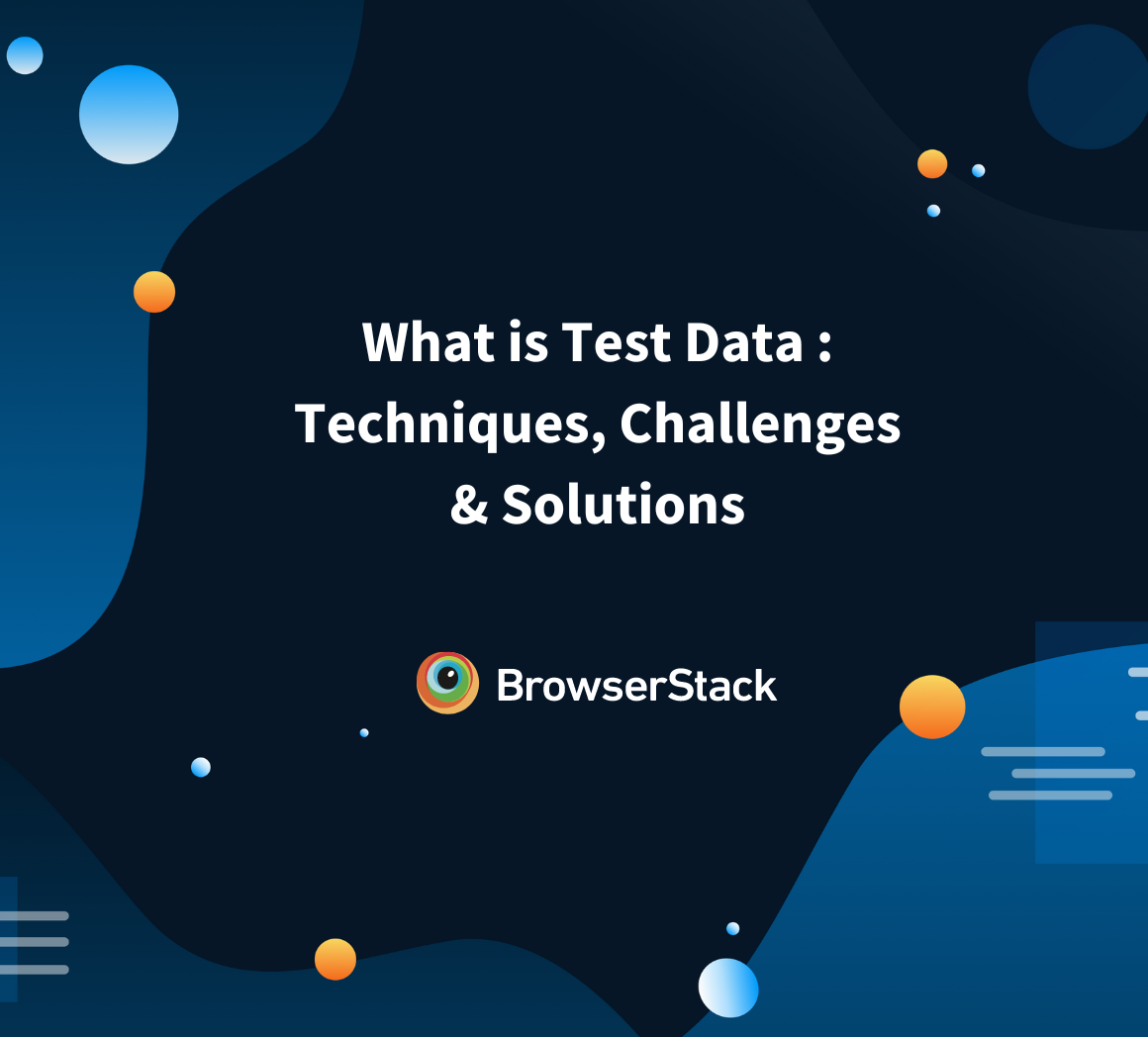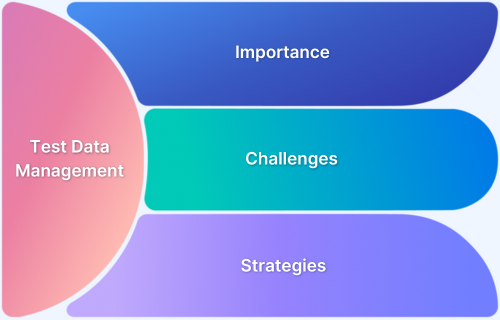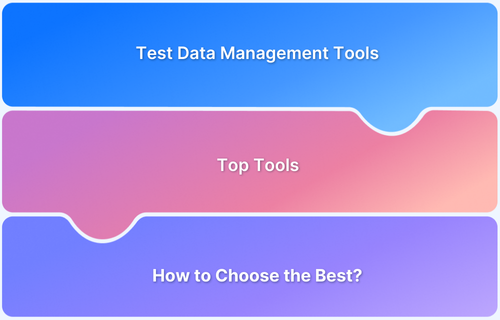Ever spent hours debugging a failed test only to realize the issue wasn’t in your script, but in the setup itself?
It happens more often than most teams expect. A recent survey found that 59% of test failures are caused by unstable or misconfigured environments, not by issues in the code itself. When environments are inconsistent, automation becomes unpredictable and test results lose credibility.
In fact, teams with well-defined environments report smoother integration, faster test runs, and fewer false failures across CI/CD pipelines.
This guide explains how to set up environments for web and mobile automation, manage test data effectively, and scale using cloud infrastructure for stable, repeatable results.
What is Test Environment?
A test environment is the configuration of hardware, software, network, and tools required to test an application under real-world conditions. It replicates the production environment as closely as possible to ensure accurate validation of functionality, performance, and reliability.
Key elements of a test environment include:
- Hardware setup: Servers, devices, and network resources needed for execution.
- Software stack: Operating systems, databases, browsers, and application builds.
- Testing tools: Automation frameworks, CI/CD systems, and reporting tools.
- Data and configurations: Test data, user accounts, and system variables.
Prerequisites for Test Environment Setup
Before configuring an automation test environment, certain prerequisites must be addressed to ensure smooth execution.
- Clear requirements: Define the scope of testing, application platforms (web, mobile, desktop), and supported environments.
- Defined test strategy: Establish which tests will be automated (regression, smoke, functional) and which remain manual.
- Resource planning: Allocate skilled personnel, infrastructure, and test data.
- Tool selection criteria: Identify tools based on compatibility, integration, and scalability needs.
- Version control system: Ensure application code and test scripts are maintained in a source control system like Git.
- Security and compliance: Align with organizational security policies and compliance requirements.
Choosing the Right Testing Tools
The choice of tools greatly impacts the efficiency of the test environment. The tools must align with the technology stack, testing goals, and scalability requirements.
Important considerations include:
- Framework compatibility: Support for Selenium, Appium, Cypress, or Playwright.
- Cross-platform support: Ability to test across browsers, OS, and devices.
- Integration capability: CI/CD pipelines, reporting dashboards, and version control.
- Ease of maintenance: Tools with reusable components and minimal setup overhead.
- Scalability: Ability to handle parallel test execution and large test suites.
BrowserStack Automate fulfills all these needs by providing a scalable cloud platform with real devices, cross-browser coverage, and seamless CI/CD integration—ensuring faster, more reliable test execution.
Setting Up Test Environment for Web Automation
For web applications, the environment should cover multiple browsers and operating systems to validate cross-browser compatibility.
Steps include:
- Define supported browsers/versions: Chrome, Firefox, Safari, Edge, and legacy browsers.
- Set up test frameworks: Selenium WebDriver, Cypress, or Playwright.
- Configure browser drivers: ChromeDriver, GeckoDriver, etc., for local execution.
- Integrate parallel testing: Use Selenium Grid or cloud platforms for running tests concurrently.
- CI/CD integration: Automate test runs after every build or deployment.
- Reporting setup: Configure tools like Allure or ExtentReports for actionable insights.
Setting Up Mobile Automation Test Environment
Mobile applications require validation across diverse devices, screen sizes, and OS versions.
Steps include:
- Device selection: Identify critical Android and iOS versions, devices, and form factors.
- Framework setup: Use Appium, Espresso, or XCUITest.
- Emulators and simulators: Use for initial validation, but rely on real devices for accuracy.
- Device management: Set up USB-connected devices or use cloud-based real device labs.
- Automation scripts: Create reusable test cases for functional, performance, and UI validation.
- Continuous testing: Integrate into pipelines for faster feedback.
Automation Framework Setup
The test framework is the backbone of automation. A well-designed framework improves reusability, maintainability, and scalability.
Key approaches:
- Page Object Model (POM): Reduces code duplication by separating test logic from UI elements.
- Data-driven testing: Uses external data sources (Excel, JSON, databases) to run tests with multiple inputs.
- Keyword-driven testing: Defines high-level keywords to represent actions, improving readability.
- Hybrid frameworks: Combines multiple approaches for flexibility.
Essential components include reusable libraries, test data handlers, reporting mechanisms, and utilities for parallel execution.
Continuous Integration and Continuous Delivery (CI/CD) Setup
Integrating automated tests into CI/CD pipelines ensures fast, continuous feedback.
Steps:
- Select CI/CD tools: Jenkins, GitHub Actions, GitLab CI, CircleCI.
- Pipeline integration: Trigger tests automatically after every build, commit, or deployment.
- Parallel execution: Configure pipelines to run tests in parallel for faster results.
- Notifications and reporting: Send automated test results to teams via dashboards, Slack, or email.
CI/CD-enabled automation creates a continuous feedback loop, ensuring defects are detected early.
Read More: Top 18 Test Data Management Tools
Cloud-Based Automation Test Environment
As applications are deployed across a wide range of devices, operating systems, and browsers, maintaining an in-house infrastructure that covers every possible combination becomes both costly and complex. A cloud-based automation test environment addresses these challenges by providing on-demand, scalable, and accessible infrastructure for executing automated tests.
Key Characteristics of a Cloud-Based Test Environment:
- On-demand scalability: Teams can instantly scale up to run thousands of automated tests in parallel, without being limited by physical hardware or in-house infrastructure.
- Extensive coverage: Cloud platforms provide access to a large pool of browsers, operating systems, and real devices, ensuring both legacy and latest versions are tested.
- Global accessibility: Test environments are accessible from anywhere, enabling distributed teams to collaborate seamlessly.
- Cost efficiency: Instead of maintaining a physical device lab and infrastructure, organizations pay for what they use, significantly lowering operational costs.
- Maintenance-free setup: The provider manages device upgrades, browser updates, and infrastructure reliability, reducing overhead for QA teams.
Advantages of Cloud-Based Test Environments:
- Faster execution of tests through parallelization.
- Accurate results due to testing on real devices and browsers.
- Seamless integration with CI/CD pipelines and popular automation frameworks.
- Enhanced collaboration across globally distributed development and QA teams.
- Enterprise-grade security and compliance for sensitive projects.
Limitations to Consider:
- Requires reliable internet connectivity for smooth execution.
- Subscription costs may grow with higher usage tiers.
- Data-sensitive industries may need to carefully evaluate compliance requirements.
By leveraging a cloud-based automation test environment, teams can focus on creating and maintaining high-quality tests rather than managing infrastructure, making it an indispensable part of modern agile and DevOps testing strategies.
Managing Test Data and Test Environments
Test data and environment management are critical aspects of automation that directly impact the accuracy and reliability of test execution. Poorly managed environments or inconsistent data sets often lead to false positives, flaky tests, or system conflicts, ultimately slowing down the release cycle. Proper strategies ensure stability, repeatability, and trust in the results generated by automated tests.
Key Strategies for Managing Test Data:
- Data provisioning and creation: Instead of relying on production data, create controlled, anonymized datasets that accurately simulate real-world scenarios without exposing sensitive information.
- Reusable datasets: Store frequently used test inputs (such as user accounts, product catalogs, or payment details) in external files or databases to avoid repetitive creation.]
- Dynamic test data generation: Use scripts or tools to generate unique test data during execution, reducing dependency on preconfigured values.
- Masking and anonymization: Apply masking techniques to sensitive information (like personally identifiable data) to ensure compliance with data privacy regulations such as GDPR.
- Data reset mechanisms: Incorporate cleanup scripts or database rollback processes to reset environments after execution, ensuring consistency for future runs.
Key Strategies for Managing Test Environments:
- Environment isolation: Maintain separate environments for development, testing, staging, and production. This prevents overlap and ensures stability during automation runs.
- Configuration management: Use environment-specific configuration files (such as YAML, JSON, or .env files) to simplify switching between environments without modifying test scripts.
- Service virtualization: Simulate unavailable or third-party systems (e.g., payment gateways, APIs) with virtualization tools to ensure uninterrupted test execution.
- Version synchronization: Keep environments aligned with the application’s production version, including operating systems, libraries, and dependencies, to avoid mismatch-related failures.
- Monitoring and logging: Implement monitoring solutions to track environment uptime, resource usage, and error logs, which helps in quickly diagnosing issues.
Benefits of Effective Test Data and Environment Management:
- Higher reliability of test outcomes with fewer false positives or negatives.
- Faster execution cycles due to readily available and reusable data.
- Improved security and compliance by masking sensitive information.
- Reduced downtime by isolating failures within controlled environments.
- Greater confidence in automation results, leading to smoother releases.
Best Practices for Automation Test Environment Setup
Following best practices ensures long-term stability and efficiency.
A well-planned test environment ensures stability, faster execution, and reliability of automation. By following established best practices, teams can prevent common pitfalls such as flaky tests, environment drift, or scalability issues.
- Standardize Environment Configurations: Use configuration management tools like Ansible, Puppet, or Chef to ensure uniform setup across all environments. This reduces inconsistencies and minimizes “works on my machine” issues.
- Use Containerization for Consistency: Adopt Docker or Kubernetes to package applications, dependencies, and test tools into containers. This guarantees identical execution environments for local, staging, and cloud testing.
- Design Tests for Independence: Write automation scripts that do not rely on the outcome of previous tests. Independent tests are easier to parallelize and provide faster, more reliable results.
- Isolate Test Environments: Maintain separate environments for development, QA, staging, and production. Isolated setups prevent conflicts and reduce the risk of unintentional changes impacting critical environments.
- Implement Parallel Execution Early: Enable parallel test execution as part of the environment setup to optimize speed and coverage. Combine this with proper test data management to avoid conflicts.
- Leverage Environment Variables: Store environment-specific details (URLs, credentials, API keys) in configuration files or environment variables. This avoids hardcoding values into scripts and makes the setup flexible.
- Enable Robust Monitoring and Logging: Incorporate monitoring tools and logging frameworks to track system health, resource usage, and test execution metrics. Detailed logs simplify debugging when tests fail.
- Integrate with CI/CD Pipelines: Automate execution within CI/CD pipelines so that tests run consistently after each code change. This ensures faster feedback loops and defect detection.
- Maintain Proper Test Data Management: Create reusable, anonymized datasets and reset them after execution. Well-managed data avoids flaky results and ensures repeatability across runs.
- Regularly Update and Maintain Environments: Outdated browsers, OS versions, or libraries can cause discrepancies. Keep test environments up to date and aligned with production systems.
- Prioritize Security and Compliance: Ensure test environments comply with data privacy laws (GDPR, HIPAA, etc.) and secure access to sensitive resources through role-based authentication.
- Document Environment Setup: Maintain detailed documentation of configurations, dependencies, and setup procedures. Clear documentation ensures knowledge transfer and consistency across teams.
Get Expert QA Guidance Today
Schedule a call with BrowserStack QA specialists to discuss your testing challenges, automation strategies, and tool integrations. Gain actionable insights tailored to your projects and ensure faster, more reliable software delivery.
How BrowserStack Can Help in Automation Test Environment Setup?
BrowserStack Automate provides an enterprise-ready cloud infrastructure for setting up a scalable automation environment without the overhead of managing devices, browsers, or infrastructure.
Key benefits:
- Real device and browser access: Test on 3,500+ real devices and browsers, covering both legacy and latest versions.
- Parallel execution at scale: Run thousands of tests simultaneously, cutting execution time drastically.
- CI/CD integration: Seamlessly integrates with Jenkins, GitHub Actions, CircleCI, and other pipelines.
- Debugging tools: Access logs, video recordings, and network traffic for faster defect resolution.
- Enterprise security: SOC2 and GDPR-compliant environments ensure data safety.
By leveraging BrowserStack, teams can set up, scale, and maintain automation test environments instantly, ensuring faster and more reliable releases.
Conclusion
An automation test environment forms the foundation of reliable, efficient, and scalable testing. From selecting tools and frameworks to managing test data and enabling CI/CD, each step requires careful planning.
While local setups provide flexibility, cloud-based platforms like BrowserStack simplify the process by offering real devices, instant scalability, and seamless integrations.
Teams that establish strong automation test environments can achieve faster release cycles, higher quality software, and improved collaboration across development and QA.







